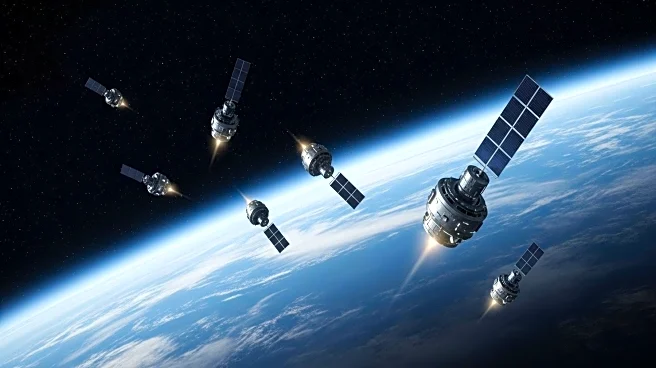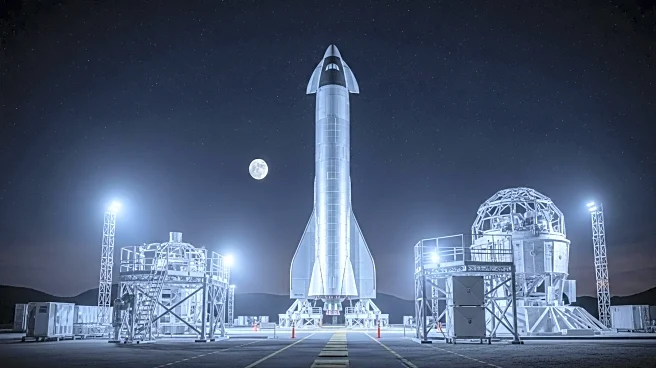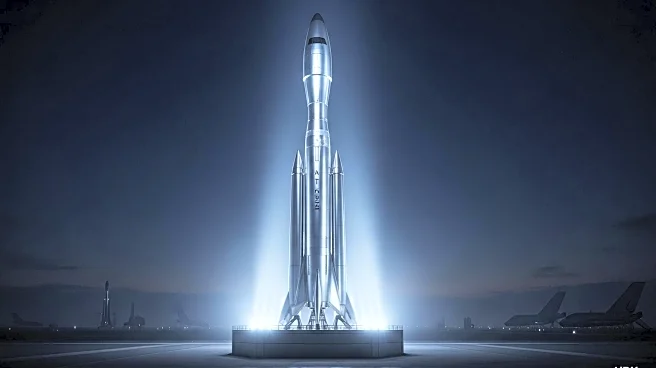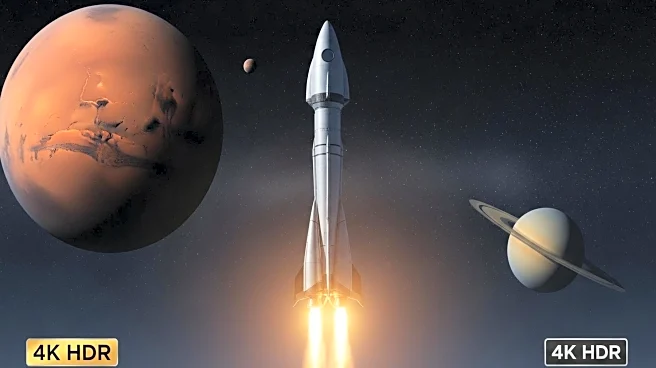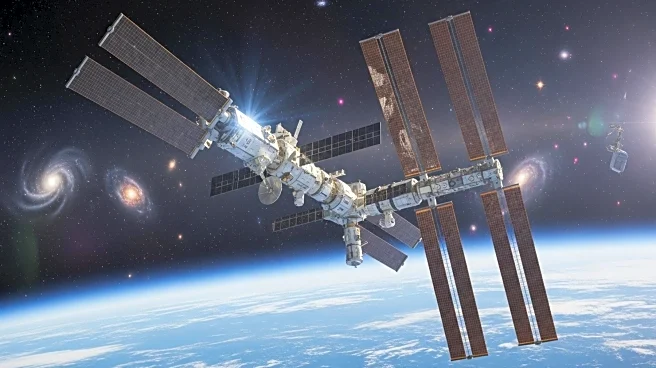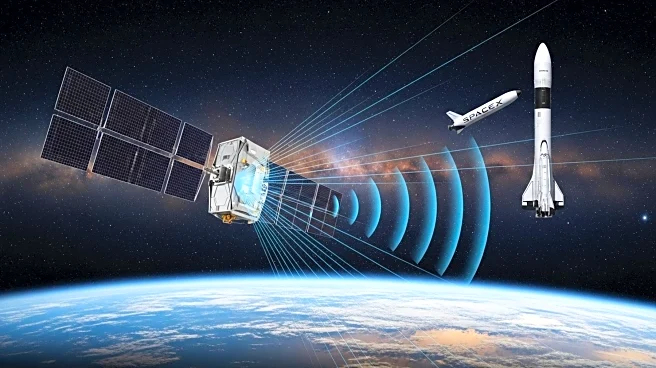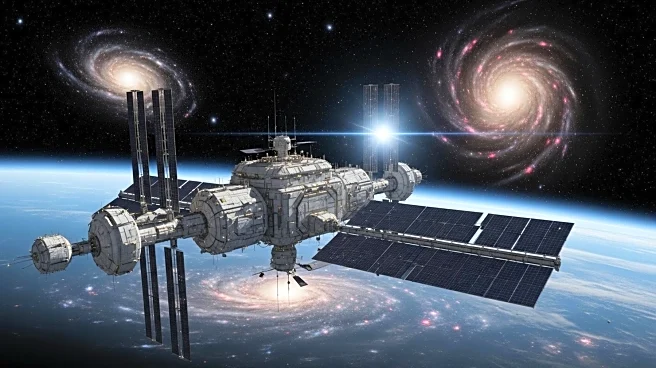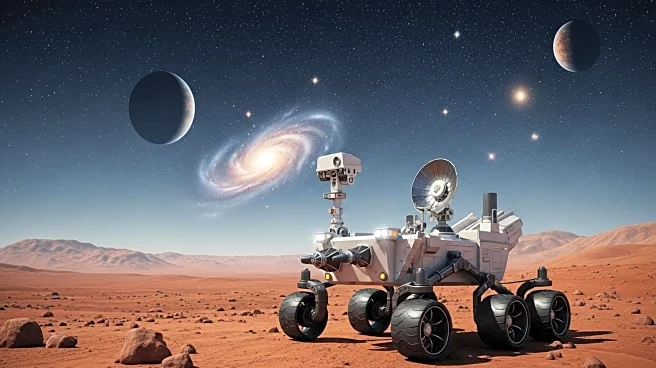What's Happening?
SpaceX has successfully launched a Falcon 9 rocket carrying 28 Starlink satellites from Cape Canaveral Space Force Station in Florida. The launch took place on October 7, 2025, at 2:46 a.m. EDT. The rocket's first stage landed on the SpaceX drone ship 'A Shortfall of Gravitas' in the Atlantic Ocean approximately 8.5 minutes after liftoff. This mission marks the eighth launch and landing for the booster designated B1090. The Falcon 9's upper stage continued to transport the Starlink satellites to low Earth orbit, where they are scheduled to be deployed about 64 minutes after launch. This event represents SpaceX's 130th launch of the year, including suborbital test flights of the Starship megarocket.
Why It's Important?
The successful deployment of additional Starlink satellites is a significant step in SpaceX's mission to provide global broadband internet coverage. The expansion of the Starlink constellation enhances internet accessibility, particularly in remote and underserved areas. This development is crucial for bridging the digital divide and promoting economic growth in regions lacking reliable internet infrastructure. Furthermore, the repeated successful landings of the Falcon 9's first stage demonstrate SpaceX's advancements in reusable rocket technology, which could lead to reduced launch costs and increased frequency of space missions.
What's Next?
SpaceX plans to continue its aggressive launch schedule, with the next Starship test flight scheduled for October 13, 2025. The company aims to further develop its reusable launch vehicle technology and expand the Starlink network. As the constellation grows, SpaceX will likely face regulatory and competitive challenges, particularly in securing spectrum rights and managing orbital debris. The company's progress will be closely monitored by industry stakeholders and regulatory bodies.

